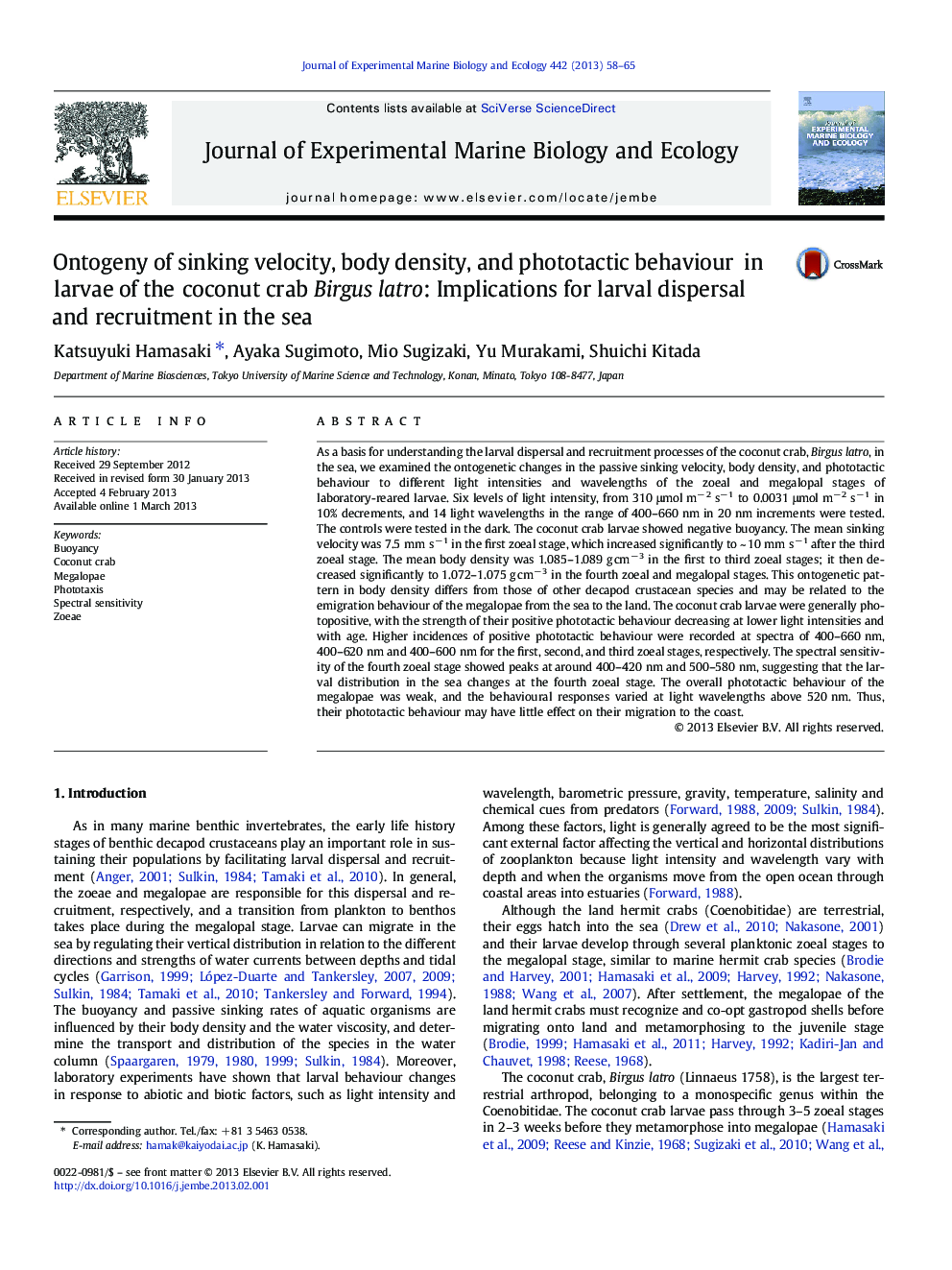| کد مقاله | کد نشریه | سال انتشار | مقاله انگلیسی | نسخه تمام متن |
|---|---|---|---|---|
| 4395689 | 1618433 | 2013 | 8 صفحه PDF | دانلود رایگان |

As a basis for understanding the larval dispersal and recruitment processes of the coconut crab, Birgus latro, in the sea, we examined the ontogenetic changes in the passive sinking velocity, body density, and phototactic behaviour to different light intensities and wavelengths of the zoeal and megalopal stages of laboratory-reared larvae. Six levels of light intensity, from 310 μmol m− 2 s− 1 to 0.0031 μmol m− 2 s− 1 in 10% decrements, and 14 light wavelengths in the range of 400–660 nm in 20 nm increments were tested. The controls were tested in the dark. The coconut crab larvae showed negative buoyancy. The mean sinking velocity was 7.5 mm s− 1 in the first zoeal stage, which increased significantly to ~ 10 mm s− 1 after the third zoeal stage. The mean body density was 1.085–1.089 g cm− 3 in the first to third zoeal stages; it then decreased significantly to 1.072–1.075 g cm− 3 in the fourth zoeal and megalopal stages. This ontogenetic pattern in body density differs from those of other decapod crustacean species and may be related to the emigration behaviour of the megalopae from the sea to the land. The coconut crab larvae were generally photopositive, with the strength of their positive phototactic behaviour decreasing at lower light intensities and with age. Higher incidences of positive phototactic behaviour were recorded at spectra of 400–660 nm, 400–620 nm and 400–600 nm for the first, second, and third zoeal stages, respectively. The spectral sensitivity of the fourth zoeal stage showed peaks at around 400–420 nm and 500–580 nm, suggesting that the larval distribution in the sea changes at the fourth zoeal stage. The overall phototactic behaviour of the megalopae was weak, and the behavioural responses varied at light wavelengths above 520 nm. Thus, their phototactic behaviour may have little effect on their migration to the coast.
► We examined the buoyancy and phototaxis of laboratory-reared coconut crab larvae.
► The larvae displayed negative buoyancy.
► A light stimulus induced phototactic behaviour in the larvae.
► The spectral sensitivity of zoeae may correspond to the spectrum in the habitat.
► The weak phototaxis of megalopae may have little effect on their migration behaviour.
Journal: Journal of Experimental Marine Biology and Ecology - Volume 442, April 2013, Pages 58–65